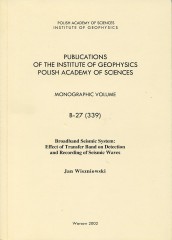- A - Physics of the Earth's Interior
- B - Seismology
-
C - Geomagnetism
C-119, C-118, C-117, C-116, C-115, C-114, C-113, C-112, C-111, C-110, C-109, C-108, C-107, C-106, C-105, C-104, C-103, C-102, C-101, C-100, C-99, C-98, C-97, C-96, C-95, C-94, C-93, C-92, C-91, C-90, C-89, C-88, C-87, C-86, C-85, C-84, C-83, C-82, C-81, C-80, C-79, C-78, C-77, C-76, C-75, C-74, C-73, C-72, C-71, C-70, C-69, C-68, C-67, C-66, C-65, C-64, C-63, C-62, C-61, C-60, C-59, C-58, C-57, C-56, C-55, C-54, C-53, C-52, C-51, C-50, C-49, C-48, C-47, C-46, C-45, C-44, C-43, C-42, C-41, C-40, C-39, C-38, C-37, C-36, C-35, C-33, C-32, C-31, C-30, C-29, C-28, C-27, C-26, C-25, C-24, C-23, C-22, C-21, C-20, C-19, C-18, C-17, C-16, C-15, C-14, C-13, C-12, C-11, C-10, C-9, C-8, C-7, C-6, C-5, C-4, C-3, C-2, C-1
-
D - Physics of the Atmosphere
D-79, D-78, D-77, D-76, D-75, D-74, D-73, D-72, D-71, D-70, D-69, D-68, D-67, D-66, D-65, D-64, D-63, D-62, D-61, D-60, D-59, D-58, D-57, D-56, D-55, D-54, D-53, D-52, D-51, D-50, D-49, D-48, D-47, D-46, D-44, D-45, D-43, D-42, D-41, D-40, D-39, D-38, D-37, D-35, D-34, D-33, D-32, D-31, D-30, D-28, D-27, D-26, D-25, D-24, D-23, D-22, D-21, D-20, D-19, D-18, D-17, D-16, D-15, D-14, D-13, D-12, D-11, D-10, D-9, D-8, D-7, D-6, D-5, D-4, D-3, D-2, D-1
- E - Hydrology
- P - Polar Research
- M - Miscellanea
-
Online First
Broadband Seismic System: Effect of Transfer Band on Detection and Recording of Seismic Waves
Volume: 339
Series: B-27
The Institute of Geophysics of the Polish Academy of Sciences has been making seismic observations on the basis of a network of its own seismic stations distributed over the area of Poland. The objective is to record earthquakes from the whole world and seismic events occurring in Poland and neighbouring countries, the majority of the latter being mining-induced events. At the Institute of Geophysics we have also been designing seismological instruments. We started with analog instruments which recorded ground vibrations on a paper, and later, for the last 30 years or so, we have been designing digital instruments which electronically record seismic signals as rows of numbers. The newest construction of the Institute of Geophysics is a broad-band seismic data acquisiton system UMSS MK-6.
MONOGRAPHIC VOLUME
CONTENTS
1. Introduction, ...3
2. History of designing digital seismic instruments at the Institute of Geophysics of the Polish Academy of Sciences, ...9
3. Principle of operation of the broad-band seismic data acquisition system MK-6, ...15
3.1 Sampling and timing of the signal, ...16
3.2 Dynamics of the recording, ...20
3.3 Seismic signal filtration, ...29
3.4 Recording and processing of seismic observations by a computer, ...39
4. Seismic instruments responses, ...45
4.1 Methods for describing the instrument´s response function, ...45
4.2 Methods for determining the instrument´s response function, ...51
4.3 Response of the MK-6 instrument, ...58
5. Measurement of noise on the basis of MK-6 recording, ...75
5.1 Self-noise, ...76
5.2 Seismic background noise recorded at the station, ...79
5.3 Real dynamics of the earthquake recording system, ...82
6. Detection algorithms of the recorded earthquakes, ...87
6.1 Detection in time domain based on the STA/LTA algorithm, ...92
6.2 Detection in the frequency domain, ...103
6.3 Detection by means of artificial neural network, ...105
7. Examples of recording, ...129
7.1 Local and regional earthquakes, ...129
7.2 Recordings of teleseismic events, ...137
8. Summary, ...143
Appendix A. Description of transfer functions of the MK-6 instrument, ...151
Appendix B. Algorithms of earthquake detection programs, ...159
Appendix C. UMSS data format, ...169
Appendix D. Example of a file with seismic station description, ...171
References, ...173
Acknowledgments, ...177


